Class 4 EVS Worksheet Solutions Chapter 7 How Things Work
| Table of contents |

|
| Multiple Choice Questions (MCQs) |

|
| Fill in the Blanks |

|
| Match the Following |

|
| Short Question Answers |

|
| Vocabulary Activity - "Guess the Word" |

|
Multiple Choice Questions (MCQs)
Q1: What happens when a coin spins?
(a) It continues spinning forever
(b) It slows down, shakes, and stops because it loses balance
(c) It spins faster
(d) It stays upright without slowing down
Ans: (b) It slows down, shakes, and stops because it loses balance
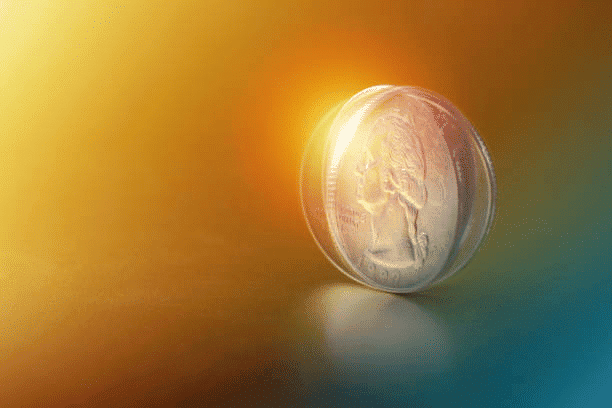
Q2: What makes a square spinner appear circular when spun quickly?
(a) The edges blur
(b) It becomes larger
(c) The center becomes transparent
(d) It loses color
Ans: (a) The edges blur
Q3: What is the primary factor that influences whether an object floats or sinks?
(a) Only the weight of the object
(b) The color of the object
(c) The shape of the object
(d) The temperature of the water
Ans: (c) The shape of the object
Q4: What is a charkha used for?
(a) To twist cotton into thread
(b) To create paper boats
(c) To spin wool into thread
(d) To make toys
Ans: (a) To twist cotton into thread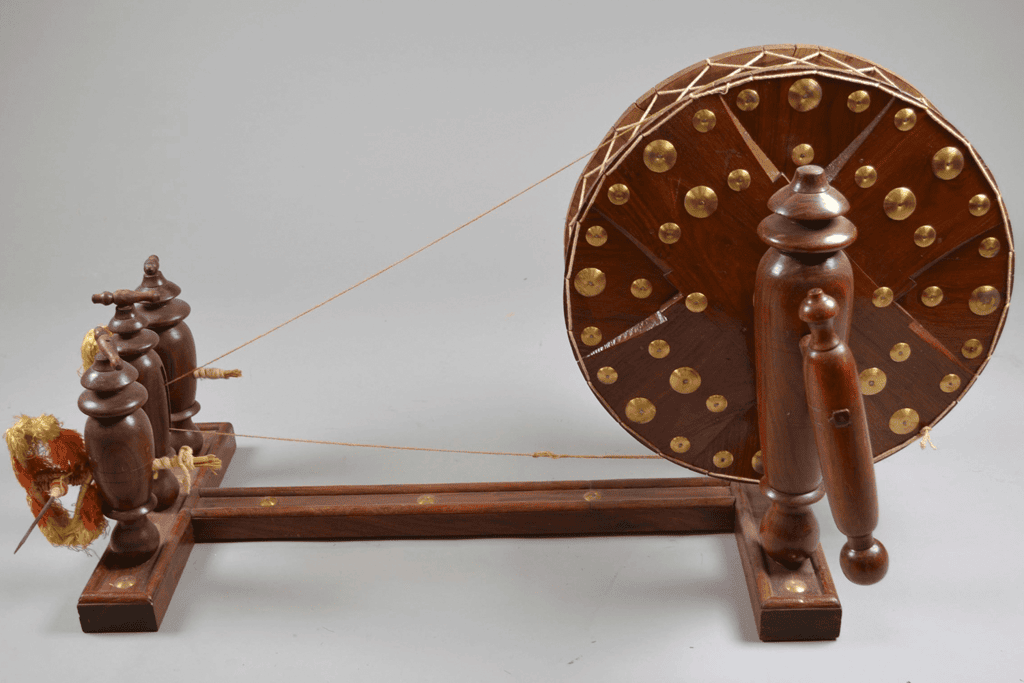
Q5: What is one of the factors that helps objects float?
(a) Shape
(b) Color
(c) Texture
(d) Density
Ans: (a) Shape
Fill in the Blanks
Q1: A ________ is a tool designed to investigate spinning movements, like a top or various handmade spinners.
Ans: Spinner
Q2: A ________ is an ancient Indian spinning top crafted from wood or clay.
Ans: Lattu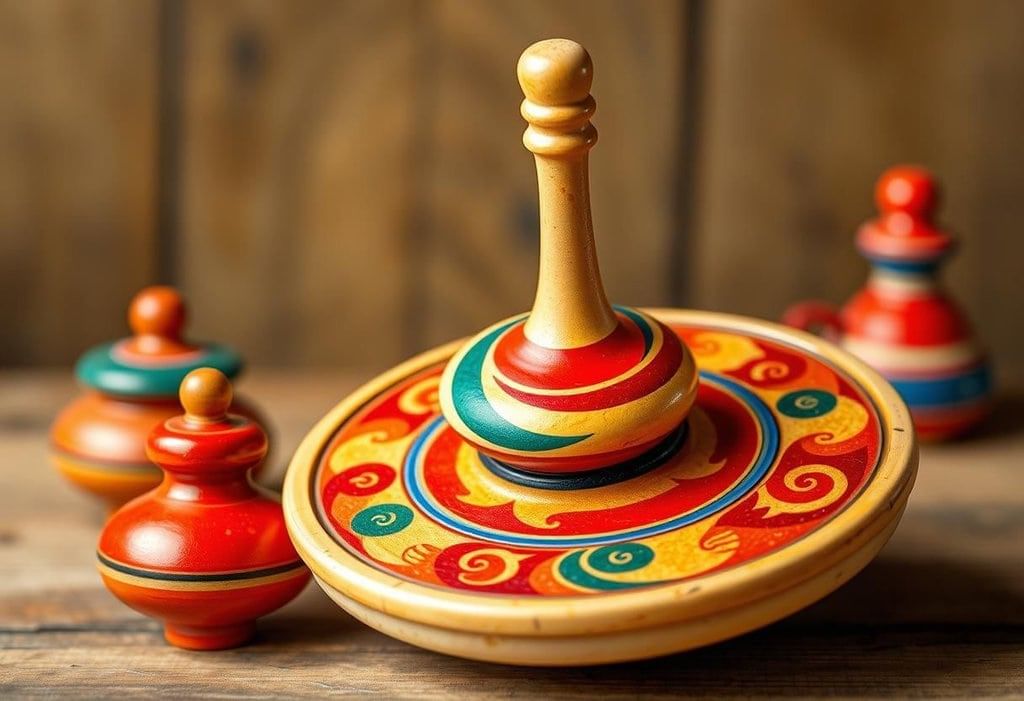
Q3: ________ is a traditional wheel for turning cotton into thread, famously used by Mahatma Gandhi.
Ans: Charkha
Q4: The ability of an object to remain on the surface of water is called ________.
Ans: Float
Q5: Objects that are ________ are tightly packed and heavy for their size.
Ans: Dense
Match the Following
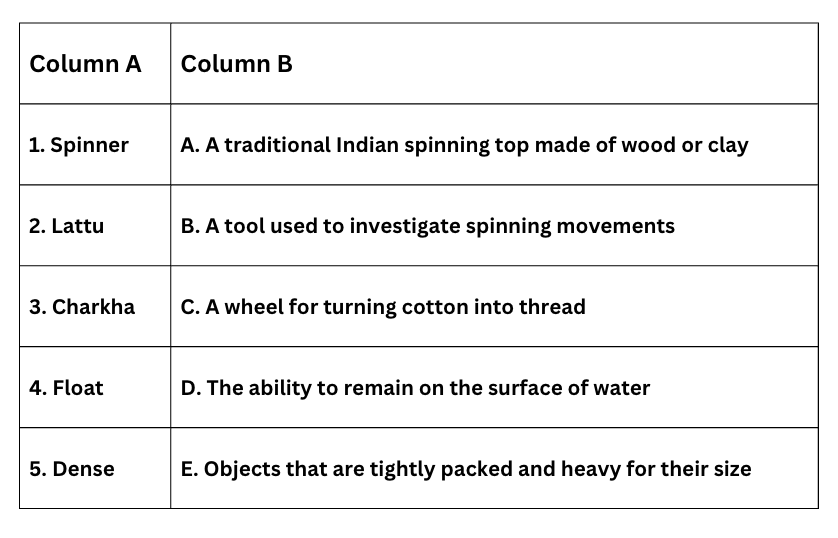
Ans:
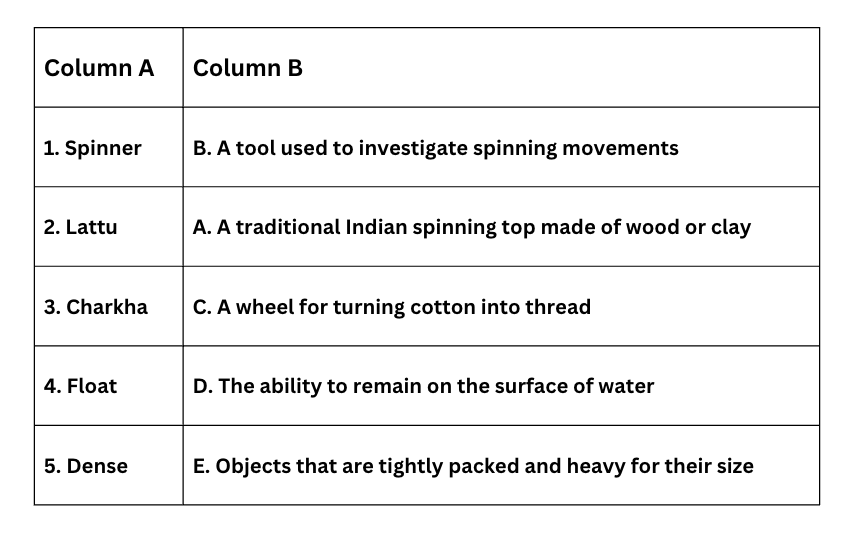
Short Question Answers
Q1: What happens when a coin spins?
Ans: When a coin spins, it gradually slows down, shakes, and stops because it loses balance.
Q2: Why does a square spinner appear circular when spun quickly?
Ans: A square spinner appears circular when spun quickly because the edges blur, making it look like a circle.
Q3: What determines whether an object floats or sinks?
Ans: The shape of an object influences whether it floats or sinks. A well-designed shape that holds air helps an object float.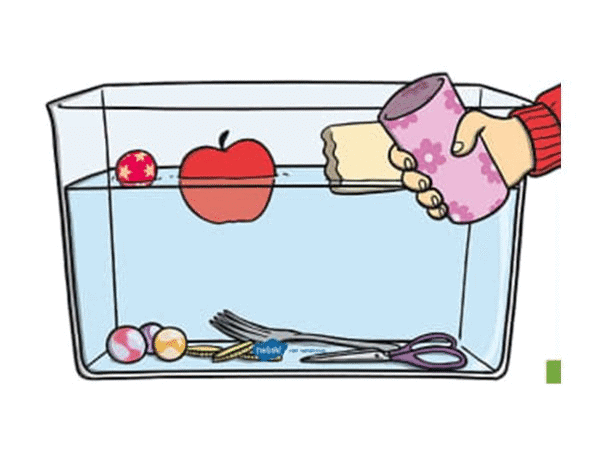
Q4: How does the charkha work and what is its importance?
Ans: A charkha (spinning wheel) is used to twist cotton fibre into thread. It has a large wheel that spins when turned by hand. Mahatma Gandhi used the charkha to make handmade clothes.
Q5: What are some examples of objects that float and sink?
Ans: Examples of objects that float include thermocol, cork, and pumpkin. Examples of objects that sink include marble, coin, and iron nail.
Vocabulary Activity - "Guess the Word"
Q1: A sharp or spicy taste, like that of green chilli.
Ans: Pungent
Q2: The way food feels in the mouth, like whether it is smooth or crunchy.
Ans: Texture
Q3: The act of something remaining on the surface of water.
Ans: Float
Q4: A heavy object tightly packed for its size.
Ans: Dense
Q5: A traditional Indian spinning top made from wood or clay.
Ans: Lattu
FAQs on Class 4 EVS Worksheet Solutions Chapter 7 How Things Work
| 1. What are the main topics covered in the "How Things Work" Class 4 curriculum? |  |
| 2. How can I best prepare for the Multiple Choice Questions (MCQs) in the exam? |  |
| 3. What is the purpose of the Fill in the Blanks section in the exam? |  |
| 4. How can I effectively answer Short Question Answers in the exam? |  |
| 5. What activities can help me with the Vocabulary Activity - "Guess the Word"? |  |















